Gastinell uses famous entertainers as subjects in his work as
well as portraits of his friends. (Photo courtesy of Brandon
Gastinell)

Because of some bold moves on his part and the exposure and connectivity that social media provides, Gastinell has transitioned from doing street art to work for major film studios and musicians.
The 26-year-old digital-mixed-media artist grew up in Antelope and moved to downtown Sacramento five years ago. He says from 2014-17, he created street art, pasting his images on stop signs and buildings around town. He wanted attention. “I guess it just came with being younger and rebellious and wanting to do graffiti,” he says.
As a teenager, he had his sights set on being a musician, but as he began creating visual art for his musical project, he found that to be easier than writing music and saw the cultural and capital currency potential of visual art on social media, so he shifted his focus.
Gastinell makes pop art using idolized figures in pop culture,
like Bill Murray, and says that broadens the age range of his
audience. (Photo courtesy of Brandon Gastinell)
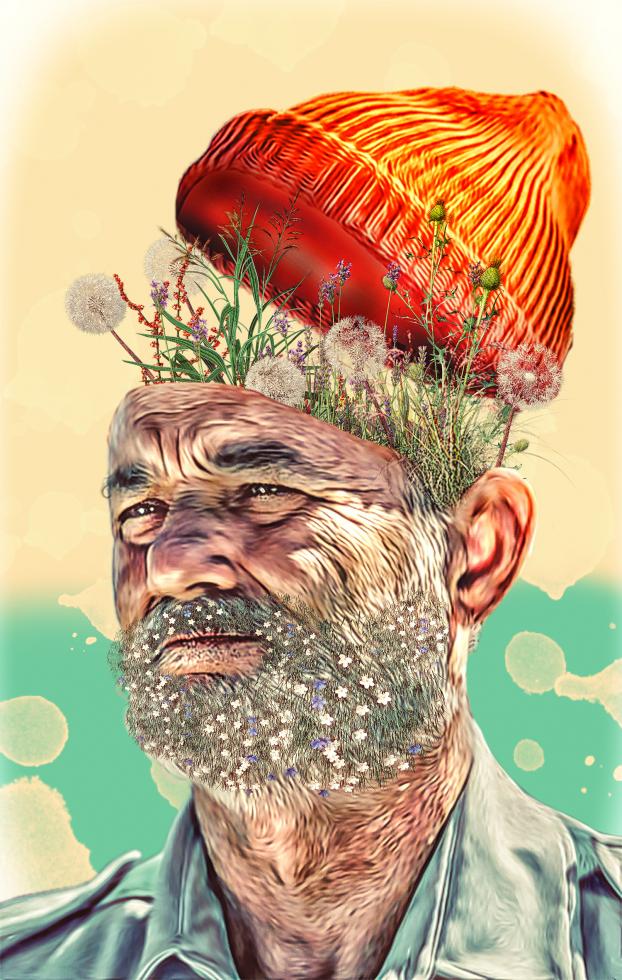
The artist has had several exhibitions in the Bay Area and Sacramento, including one in May at WAL Public Market Gallery called “I Feel Like Andy Warhol.” Gastinell says he identifies with Warhol, who popularized pop art in the 1960s. “He struggled to get his work accepted into the mainstream art world for a long time, and I … felt the exact same way with my work. He brought pop art to where it is, and … I look at my work as trying to evolve pop art.”
Like his idols, he wants to diversify. “Like magazines, billboards, clothing, shoes, so much, honestly,” are on his list of goals. “You have to progress. It’s like if Kanye — I’m not comparing myself — but inspired by that, because he didn’t stop with music, he just kept evolving and people kept saying, ‘Why do you want to do fashion when you’re a rapper?’”
Comstock’s spoke with Gastinell about using famous faces in his art as a marketing strategy and feeling like an outsider in the Sacramento art market.
Gastinell’s solo exhibition at WAL Public Market Gallery in
Sacramento in May, “I Feel Like Andy Warhol,” featured pop
culture icons, including Debbie Harry. (Photo by El Photo Maximo)
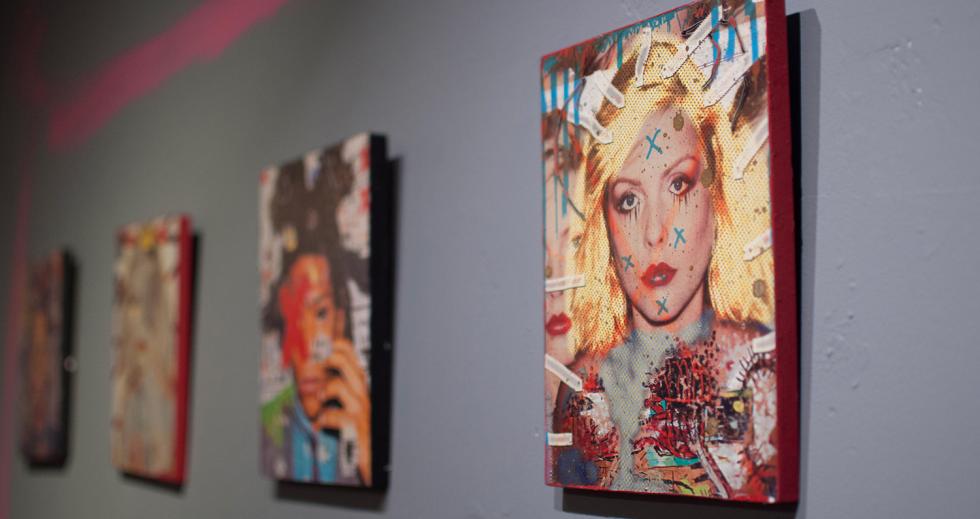
What is your process for making your digital art pieces?
It starts usually with a portrait of someone, either famous, model or friend, that I photograph (and digitally alter it). I always saw a picture that someone would take of a model, and they’d say that’s the finished work, but I could always see it taking a step further. It’s kind of like remixing something. … Digital art and collaging in general hasn’t been represented as well into the arts as it should and could be. If you go to … museums, it’s mostly (paintings) with oils and acrylics, except if you’re screenprinting like Andy Warhol.
You’ve done pieces of your artistic influences with “dead” written over their faces. Why?
Andy Warhol changed the way Gastinell looked at art, and he
defaced his idol in this piece from his show at WAL Public Market
in May, “I Feel Like Andy Warhol.” (Photo by El Photo Maximo)
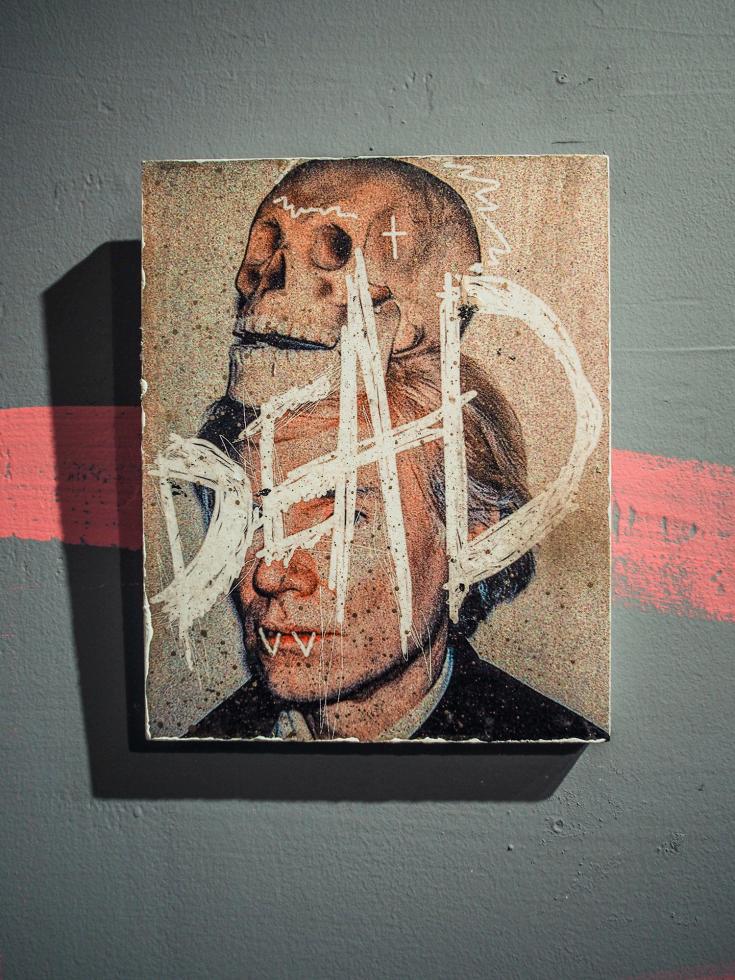
A lot of your subjects are famous entertainers. Why do you gravitate to using those people?
People respond to things that they are familiar with, and that is celebrities. If someone is walking down the street, and they see my work of someone who they’re a fan of already, they can point at it, and say, “That’s Miley Cyrus. Wow, that’s really cool.” … It’s kind of like marketing. It’s pop.
So you’re making artistic clickbait?
Yeah, that’s exactly what it is. … It’s kind of like a headline you would see on BuzzFeed or something. … I’m marketing something, so to market something, you have to be able to sell it.
How did you get hooked up with David Garibaldi?
When I used to do street art around Sacramento, I used to paste pictures of Basquiat around on the sidewalks, I used to hang signs to street lamps and stop signs, and we had one picture left, and … I said, “Whatever, screw it,” and I pasted it on his studio. And the next day, I wake up to text alerts of a video post of him, like “Who put this on my studio?” … I thought he’d be mad, but, no, he was super cool about it, and it was awesome, and he gave me the opportunity to do a show with him. … It’s things like that that get you opportunities that you just normally wouldn’t.
You did the artwork for Hobo Johnson’s new album. How did that come about?
Gastinell met Frank Lopes Jr., aka Sacramento musician Hobo
Johnson, at a party and didn’t let Lopes leave without seeing his
artwork. It led to a commission for Gastinell creating the cover
for the new album, “The Fall of Hobo Johnson.” (Photo courtesy of
Brandon Gastinell)
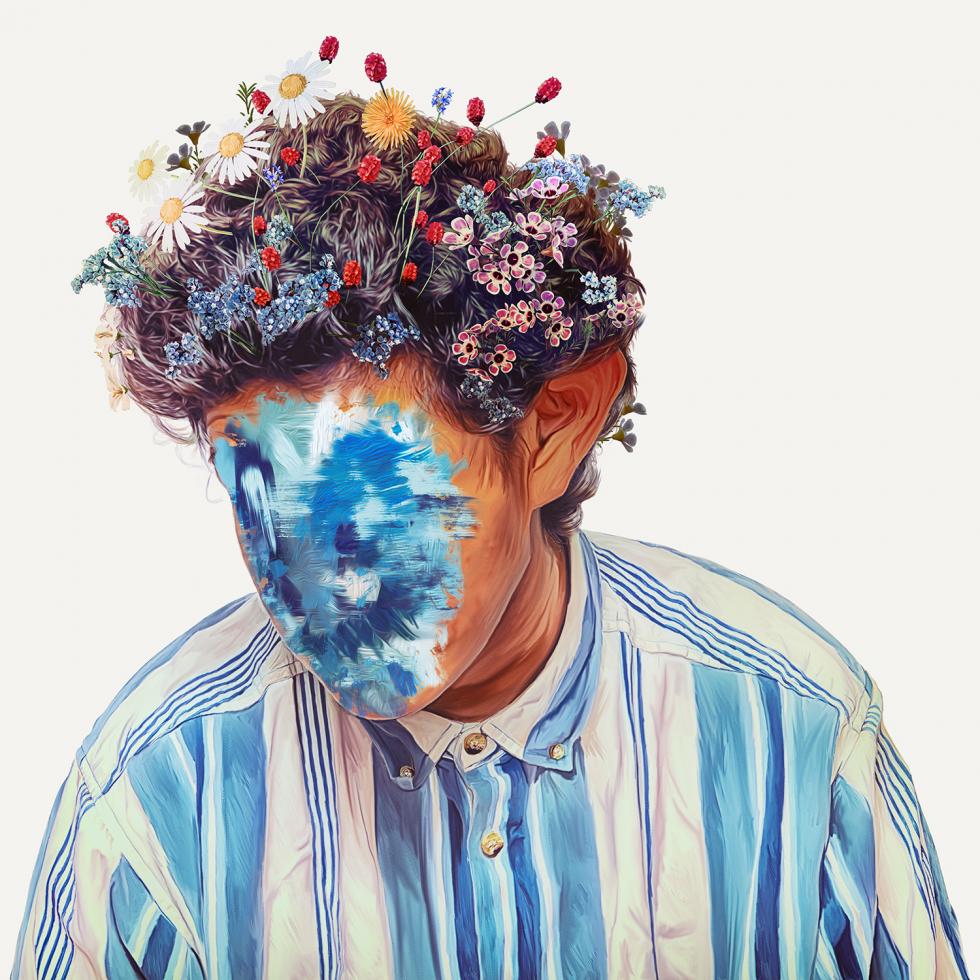
I played it casual. … We were playing video games … and right before he left, I was like, “Hey, I’m Brandon, look at my phone, look at my art.” … He followed me (on social media), and the next morning, I woke up to a message saying, “Hey, great meeting you, I’ll be in touch.”
Are you doing more shows, commissions or selling prints?
It’s commissions … But I still do street art events in Oakland on first fridays. I create about 40 pieces of artwork that are on wood (to sell) … which has been pretty successful. …
I was able to do my first movie poster (for “Blindspotting”) from that event, by just handing out my cards, and that made it down to a marketing company down in (Los Angeles).
Gastinell says that social media has been instrumental in him
being able to do art as his profession. (Photo courtesy of
Brandon Gastinell)
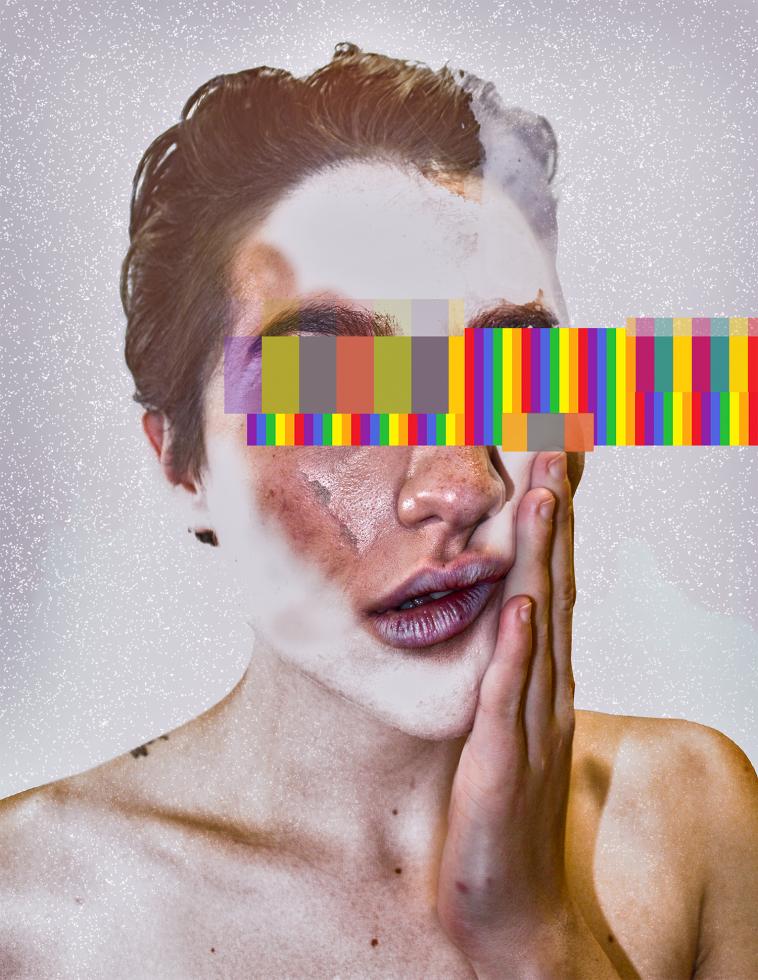
Would you do a project with a big studio or corporation again?
Yeah. I just had a meeting with (Sony Pictures Animation). They’re working on revitalizing their animation department after the success of (“Spider-Man: Into the Spider-Verse”). … They have a ton of new animation films coming out, so I’m in talks with creating different things with them.
How did that partnership come about?
It’s all social media. … I think I get probably about 10 people asking me to do things for them, album covers, podcast artwork or just general commissions a week.
What do you think about the status of the Sacramento art community?
Gastinell says that social media has been instrumental in him
being able to do art as his profession. (Photo courtesy of
Brandon Gastinell)
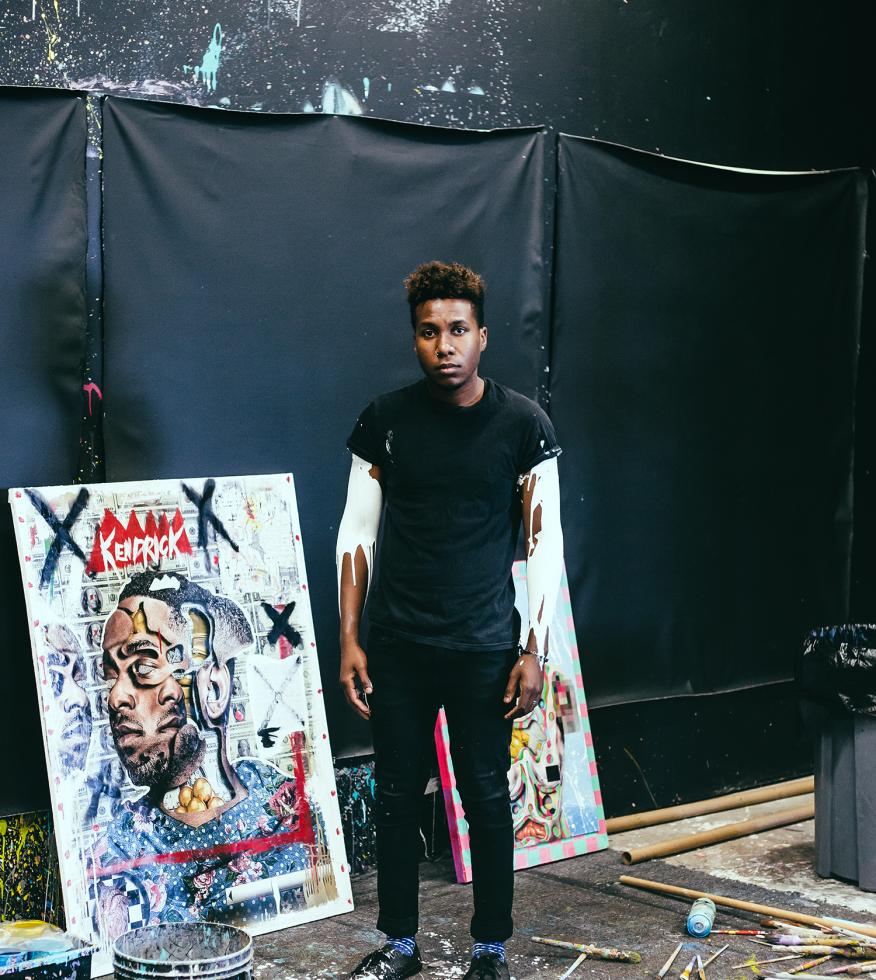
You’ve compared selling your artwork to selling clothing in terms of accessibility. Can you tell me about your approach?
Once you start to gain that attention, you want to start raising your prices, but I still like to be able to sell work to people who cannot afford something that they really love. … I don’t want to sell $500 prints to kids. … But also you don’t want to devalue your work. … I know my prices could be a lot more than what they are. I’m still trying to figure it out. … I like making and selling stickers as well. It would be awesome to be a kid and see some art and be able to afford it.



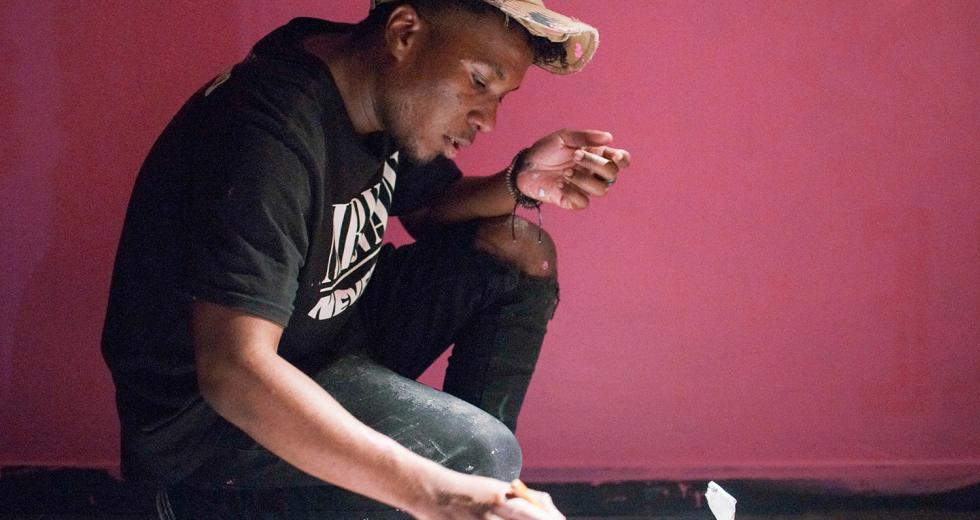
Comments
I purchased 3 pieces of your work at West Elm, I would love to display your work in my salon in east Sacramento. I’d love to hear from you.
I love your work, and would love to introduce your beautiful work to East Sacramento.